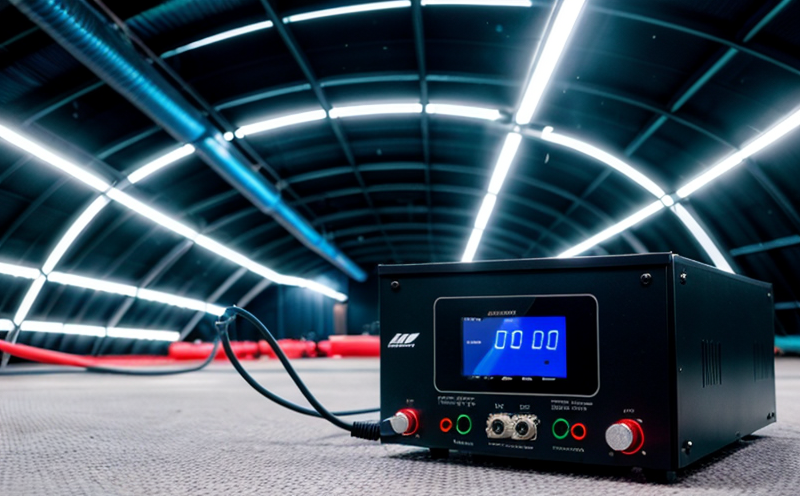Wireless Electromagnetic Testing: A Comprehensive Overview
In todays interconnected world, wireless communication has become an integral part of our daily lives. From mobile phones to Wi-Fi routers, Bluetooth devices to GPS systems, we rely heavily on wireless technology for communication, navigation, and connectivity. However, with the increasing use of wireless devices, there is a growing concern about the potential risks associated with electromagnetic radiation (EMR). This article provides an in-depth overview of wireless electromagnetic testing, its importance, methods, and applications.
Wireless Electromagnetic Testing: What is it?
Wireless electromagnetic testing involves measuring and analyzing the electromagnetic fields emitted by various wireless devices. The primary goal of this testing is to assess the exposure levels of humans and other living organisms to EMR from these devices. This type of testing is crucial in ensuring compliance with regulatory standards, such as the International Commission on Non-Ionizing Radiation Protection (ICNIRP) guidelines.
Types of Wireless Electromagnetic Testing
There are several types of wireless electromagnetic testing methods, including:
1. Spectrum Analysis: This method involves analyzing the frequency spectrum emitted by a device to determine its radiation levels.
2. Power Density Measurement: Power density is the amount of energy radiated per unit area. Measuring power density helps assess exposure levels.
3. Specific Absorption Rate (SAR): SAR measures the absorption rate of EMR by living tissue, such as the human head or body.
Methods and Equipment Used in Wireless Electromagnetic Testing
Several methods and equipment are used for wireless electromagnetic testing:
Scalar Network Analyzer: This instrument measures the reflection coefficient, transmission coefficient, and scattering parameter.
Vector Network Analyzer: A VNA measures the magnitude and phase of voltage and current signals.
Spectrum Analyzers: These instruments measure the frequency spectrum emitted by a device.
Power Meters: Power meters are used to measure power density and specific absorption rate.
Key Considerations in Wireless Electromagnetic Testing
When performing wireless electromagnetic testing, several key considerations must be taken into account:
Device Configuration: The device under test should be configured according to the manufacturers specifications.
Measurement Environment: The measurement environment should be controlled and maintained at a consistent temperature and humidity level.
Calibration: All equipment used for testing must be calibrated regularly.
In-Depth Analysis of Wireless Electromagnetic Testing Methods
Here are two detailed paragraphs in bullet point format explaining specific wireless electromagnetic testing methods:
Spectrum Analysis: Understanding the Frequency Spectrum
What is Spectrum Analysis?: Spectrum analysis involves measuring and analyzing the frequency spectrum emitted by a device.
How does it work?: A spectrum analyzer measures the amplitude and phase of voltage and current signals across various frequencies.
Benefits:
Allows for identification of radiation sources
Enables assessment of compliance with regulatory standards
Facilitates optimization of antenna designs
Challenges:
Requires specialized expertise and equipment
Can be time-consuming due to the need for multiple measurements
Power Density Measurement: Assessing Exposure Levels
What is Power Density Measurement?: Power density measurement involves assessing the amount of energy radiated per unit area.
How does it work?: A power meter measures the magnitude and phase of voltage and current signals to determine power density levels.
Benefits:
Enables assessment of exposure levels
Facilitates optimization of device designs
Supports regulatory compliance
Challenges:
Requires specialized equipment and expertise
Can be affected by environmental factors
QA: Additional Details on Wireless Electromagnetic Testing
1. What are the primary benefits of wireless electromagnetic testing?
Ensures compliance with regulatory standards
Enables assessment of exposure levels
Supports optimization of device designs
2. What is the importance of calibration in wireless electromagnetic testing?
Calibration ensures accurate measurements and reliable results
Calibration helps maintain equipment performance and accuracy over time
3. What are some common applications of wireless electromagnetic testing?
Wireless communication devices (e.g., mobile phones, Wi-Fi routers)
Medical devices (e.g., pacemakers, implantable cardioverter-defibrillators)
Navigation systems (e.g., GPS, Galileo)
4. What are some potential risks associated with electromagnetic radiation?
Health effects (e.g., cancer, neurological damage)
Interference with other electronic devices
Disruption of sensitive equipment or communication systems
5. Can wireless electromagnetic testing be performed in a home environment?
No, specialized equipment and expertise are required for accurate measurements
6. What is the role of regulatory agencies in wireless electromagnetic testing?
Establish and enforce standards for EMR exposure levels
Provide guidelines for device manufacturers and users
7. Can wireless electromagnetic testing be used to optimize device designs?
Yes, by analyzing radiation patterns and exposure levels
8. What are some emerging trends in wireless electromagnetic testing?
Increased focus on 5G technology
Growing importance of EMF safety in medical applications
9. How can individuals reduce their exposure to electromagnetic radiation?
Use devices with lower emission levels or turn them off when not in use
Maintain a safe distance from sources of EMR (e.g., Wi-Fi routers, cell towers)
10. What are some common myths about wireless electromagnetic testing?
Misconceptions about the health effects of EMR
Lack of awareness about regulatory standards and guidelines

































